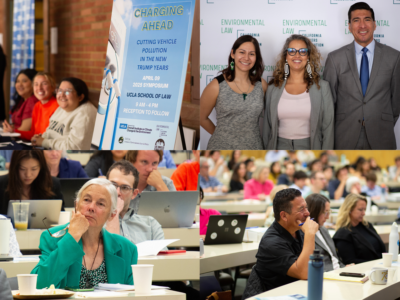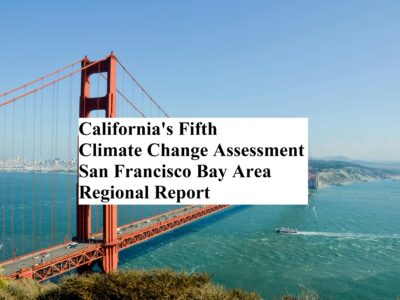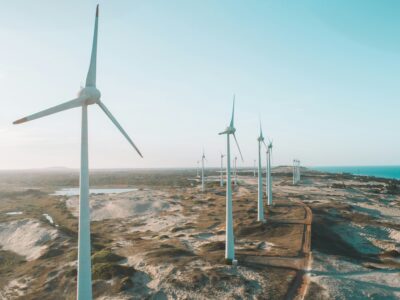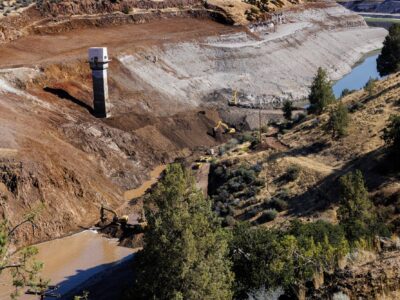General
“What We Do Matters:” UCLA’s Charging Ahead Symposium
States and cities have a lot of tools to cut vehicle pollution. It’s time to break them out.
Trump is a bump. A nasty one, but a bump nonetheless, because the world is on the road to zero-emission fuels and vehicles no matter what. That was one takeaway from “Charging Ahead,” the UCLA Emmett Institute’s annual symposium held on April 9 — devoted this year to cutting vehicle pollution during the next four …
Continue reading ““What We Do Matters:” UCLA’s Charging Ahead Symposium”
CONTINUE READINGMAGA vs NOAA, Executive Orders, and Growing IRA Support
The Drain is a new weekly roundup of climate and environmental news from Legal Planet.
Trump wants to “Make Weather a Mystery Again.” The news that started leaking last Friday is that the Trump administration wants to break up the National Oceanic and Atmospheric Administration and essentially end NOAA’s climate work by abolishing its primary research office and forcing the agency to instead help boost U.S. fossil fuel production, according …
Continue reading “MAGA vs NOAA, Executive Orders, and Growing IRA Support”
CONTINUE READINGHelp Shape the Bay Area’s Climate Future
Seeking input from local leaders, organizations, and individuals to shape California’s Fifth Climate Assessment for the region
The California Climate Change Assessment is a key initiative to understand and address the state’s climate impacts and build resilience through informed decision-making. California’s Fourth Climate Change Assessment included a series of technical reports, regional summaries, and a statewide synthesis covering key issues such as extreme heat, wildfires, and sea level rise—providing critical guidance for …
Continue reading “Help Shape the Bay Area’s Climate Future”
CONTINUE READINGMore state and local attention to financing can advance sustainable groundwater management
In 2014, California passed the Sustainable Groundwater Management Act (SGMA), a law that establishes a statewide framework for advancing the long-term availability of the state’s groundwater resources. SGMA’s framework provides local government with relative flexibility to manage its groundwater resources, but gives state agencies oversight authority and the right to intervene. SGMA requires local Groundwater …
CONTINUE READINGIntroducing Your Legal Planet Weekly Roundup
The L.A. Times Boiling Point is ending its informative weekly news roundups. Here’s your weekly Legal Planet roundup, The Drain.
Good morning! The L.A. Times fantastic Boiling Point column is ending its weekly news roundups of environmental and climate stories. As columnist Sammy Roth noted in his message to readers, “reading and analyzing so many news stories every week takes up an enormous amount of time and energy.” No kidding! I produce something similar for …
Continue reading “Introducing Your Legal Planet Weekly Roundup”
CONTINUE READINGHunting Methane Using Satellites
Joint UC Berkeley – UCLA Law report aims to help policymakers harness the methane data revolution.
A stream of data about methane—a potent greenhouse gas—is now constantly being beamed down from space. New methane satellites provide a powerful data capability for governments who want to demonstrate leadership in climate policy. To equip policymakers with necessary information on satellite methane data, UC Berkeley Law’s Center for Law, Energy and the Environment (CLEE), …
Continue reading “Hunting Methane Using Satellites”
CONTINUE READINGSenate Parliamentarian Confirms that California Waivers Are Not Subject to the Congressional Review Act
Will Republicans honor her determination?
As I have previously written, the Trump Administration is attempting an end run around the administrative process it is supposed to follow if it intends to revoke the waiver California received for three important programs to cut air pollutants from cars and trucks. You can find the details about this end run around — using …
CONTINUE READINGCommunity Benefits from Climate Infrastructure Investments
Tracking Investments Under BIL and IRA
Community Benefits tools, including Community Benefits Plans (CBPs), Community Benefits Agreements (CBAs), Host Community Agreements, and other variations are tools that can accompany infrastructure investments and bring benefits to communities that host those projects. There are different drivers that result in the use of community benefits tools and the tools employed (i.e., agreements, plans, etc) …
Continue reading “Community Benefits from Climate Infrastructure Investments”
CONTINUE READINGSuccess! Removing the Klamath Dams
A “Good News” Environmental Story (For a Change)
Most of the environmental law and policy matters discussed on Legal Planet–especially over the past few months–have dealt with natural resource crises, environmental rollbacks, hostile political actors and actions in Washington, D.C., etc. So let me take this opportunity to share an upbeat and inspirational environmental story in these otherwise troubled environmental times. In 2022, …
Continue reading “Success! Removing the Klamath Dams”
CONTINUE READINGOur 2012 Report Predicted the Future of Electric Vehicles in 2025: How Off Were We?
Time to open up the 2012 time capsule PDF
Back in 2012, CLEE and the Emmett Institute released a report called “Electric Drive by ’25,” with the relatively bold subtitle “How California Can Catalyze Mass Adoption of Electric Vehicles by 2025.” The report cited 2011-12 EV sales as reason for optimism on achieving mass adoption by 2025: Early results from the introduction of new …
CONTINUE READING











